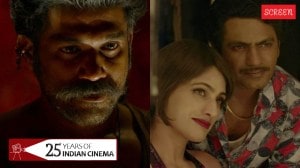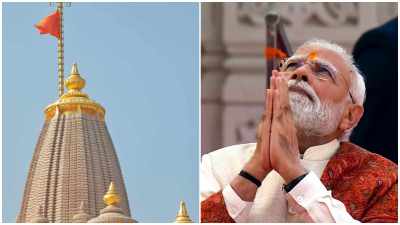Tri-services integration inevitable, have to see how long it will take: Army Chief
General Upendra Dwivedi was speaking at the launch of a book 'Operation Sindoor: The Untold Story of India's Deep Strikes Inside Pakistan' written by Lt Gen K J S Dhillon (retd).
 The Army chief's remarks comes nearly two weeks after chiefs of other two forces expressed their views on theaterisation.
(PTI Photo)
The Army chief's remarks comes nearly two weeks after chiefs of other two forces expressed their views on theaterisation.
(PTI Photo)Army Chief General Upendra Dwivedi Friday said the theaterisation move — the integration of Army, Air Force and Navy capabilities — will surely take place, and the question is only about how long it would take to happen, while adding that this reform is absolutely necessary when one has to deal with multiple agencies.
He also said, “You may be thinking that on May 10, the war finished. No, because it continued for a long time, because so many decisions were to be taken, and beyond that, of course, it will be difficult for me to share here.”
General Dwivedi was speaking in Delhi at the launch of a book, Operation Sindoor: The Untold Story of India’s Deep Strikes Inside Pakistan, written by former Army officer and author Lieutenant General K J S Dhillon (retd).
His comments come at a time when divergent views have emerged between the services on the creation of theatre commands. At the tri-services seminar Ran Samwad 2025, held in Mhow last month, Air Chief Marshal A P Singh said the Indian military’s theaterisation plans should not be rushed, while emphasising setting up a joint planning and coordination centre in Delhi under the Chiefs of Staff Committee instead, for bolstering jointness among the three services.
The next day at the seminar, Navy Chief Admiral Dinesh Kumar Tripathi said the Navy is committed to integrating its command and control, communications and combat capabilities with the Army and the Air Force to align with the theaterisation goal. At the same event, Chief of Defence Staff General Anil Chauhan pledged to address any “dissonance” within the services on the creation of theatre commands.
‘Unity of command is important’
On Friday, General Dwivedi said, “Theaterisation will come, today or tomorrow. We just have to see how long it will take. We have to go through certain steps to bring in theaterisation, which includes jointness, integration. A lot of things need to be discussed over for that,” he said.
He added: “When we fight a battle, an Army doesn’t fight alone. We have Border Security Force and Indo-Tibetan Border Police. Then there are the tri-services, defence cyber agencies, defence space agencies, and now we are talking about cognitive warfare agencies. Besides, there are agencies such as Isro (Indian Space Research Organisation), Civil Defence, Civil Aviation, Railways, NCC (National Cadet Corps), state and Central administrations.”
“If one has to deal with so many agencies, theaterisation is the answer. Because unity of command is more important. You need one commander to achieve coordination in execution. Theaterisation is absolutely necessary,” General Dwivedi said.
‘GST reduction good news for forces’
Talking about GST reduction, he said the move will give a major filip to defence corridors, because there would be more investments. “The MSMEs (Micro, Small and Medium Enterprises) and startups face difficulties as they have less funds. The GST reduction will give them a boost,” he said, adding that the GST reduction on heavy equipment will facilitate the forces in modernisation and upgradation.
“In future wars, drones, UAVs, and counter-UAVs will have a big role. So keeping that in mind, it is good news for us,” he said.
Talking about the current situation along the Line of Control (LoC) in the wake of Operation Sindoor, he stated that the impact needs to be assessed from a long-term perspective. “Has state-sponsored terrorism stopped today? I don’t think so. Why? Because infiltration attempts are still being made at the LoC. How many terrorists we have neutralised and how many have run away – it is already reported in media,” he said.
General Dwivedi also added that the book highlights the political clarity, and the full freedom that was given to the armed forces, and the setting up of politico-military objectives for the operation.
Referring to the operation, he said India even caught a small excerpt, which said, “‘Bahut hua, file chhoro, jaldi se Muzaffarabad bhago’. That was the kind of onslaught which took place, the fire assault which was there.”
General Dwivedi said that during the complete operation, the Indian Army “moved something like a rhythmic wave.”
“When I say rhythmic wave, in these 88 hours, it was not possible for you to come for the planning, pass the orders… so, everybody was synergised,” he said, adding that it will also be a kind of an “introspection for narrative management system,” and lessons for the media, on whether it was correct regarding the hype.







